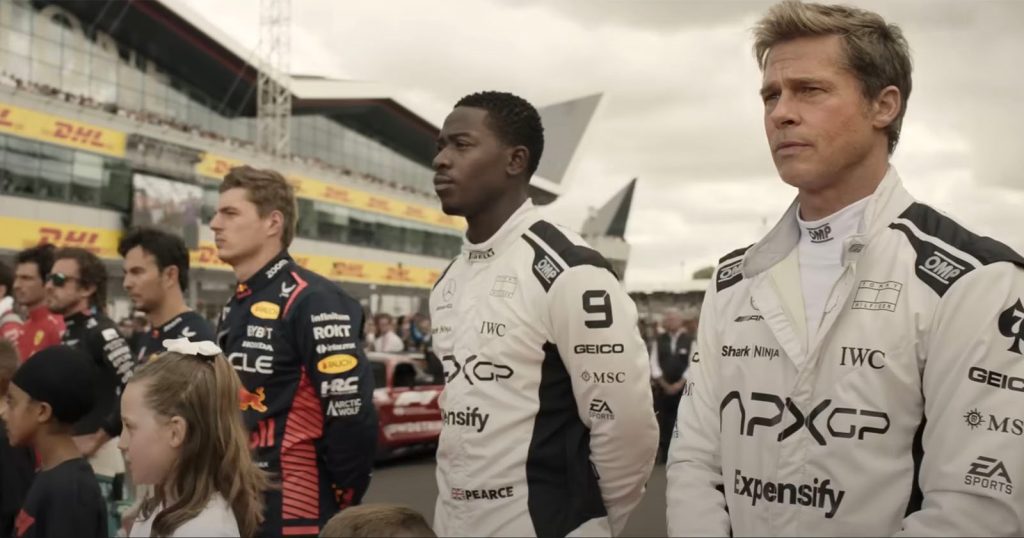The highly anticipated F1 film debuted in theaters this week, showcasing a blend of creativity and bold decision-making. Here are five noteworthy insights from its production.
Produced by Jerry Bruckheimer and directed by Joseph Kosinski, the creators of Top Gun: Maverick, the film follows a fictional racing team, APXGP, with Brad Pitt starring as driver Sonny Hayes. This article contains no significant spoilers.
Apple’s Custom Movie Cameras
Filming high-quality footage from a Formula 1 car is challenging due to the need to minimize extra weight, which can impact performance. To overcome this, Apple’s engineering team crafted a custom module designed to match the size and weight of conventional F1 broadcast cameras, utilizing iPhone technology.
The device includes an iPhone camera sensor, an A-series chip (believed to be the A17 Pro), an iPhone battery, and a neutral density filter for exposure control. While not officially confirmed, Wired hints that these details align with the 48-megapixel camera system found in the iPhone 15 Pro. Footage was captured in Apple’s ProRes codec in a log format, enabling ample post-production color grading.
Filming at Real F1 Events
Brad Pitt’s experience filming this movie was unconventional, as he found himself alongside real Formula 1 drivers. The scenes featuring Pitt with Lewis Hamilton and Max Verstappen were authentic, requiring efficient shooting schedules.
“The logistics were unlike anything I’ve experienced,” said director Joseph Kosinski. “We filmed at actual Grands Prix, working within tight timelines between practice and qualifying sessions, in front of massive crowds,” he reported to Deadline. This approach heightened the intensity compared to traditional film shoots.
A Custom Prototype Rialto System
Sony Electronics also contributed to the production with its Rialto system, a setup that separates the camera body from its sensor. A special prototype of this system was created specifically for the F1 movie, essential for capturing the in-car experience.
“We invested significant time preparing the cars,” commented cinematographer Claudio Miranda, who previously collaborated on Top Gun: Maverick. “Sony was very receptive to our needs.”
Actors Behind the Wheel
In contrast to Top Gun: Maverick, where only Tom Cruise flew planes, both Brad Pitt and co-star Damson Idris actively drove racing cars during filming. While not actual Formula 1 vehicles, they used Formula 2 cars, modified for the shoot.
Pitt and Idris underwent extensive training to master the driving techniques. The concept of using prototype race cars originated from Mercedes F1 team principal Toto Wolff. “We acquired six real F2 cars and collaborated with Mercedes to modify them for our filming needs,” revealed Kosinski.
Innovative Haptic Trailer
As part of the film’s marketing, Apple introduced the world’s first haptic movie trailer, designed to create an immersive experience. When viewed on compatible iPhones, the trailer vibrates in sync with engine sounds and other audio cues, enhancing viewer engagement.



